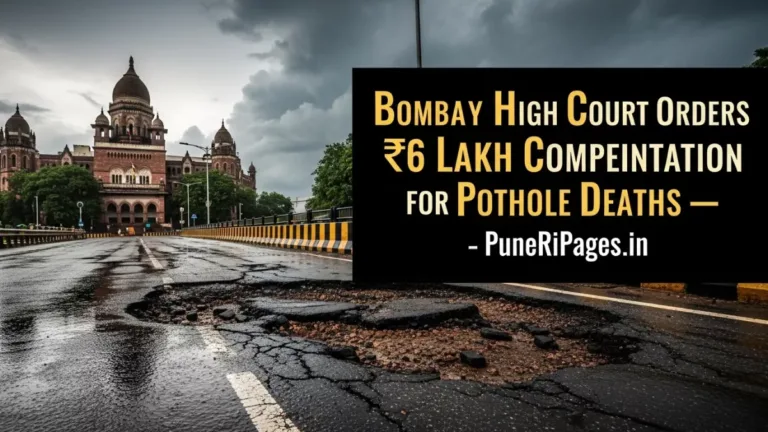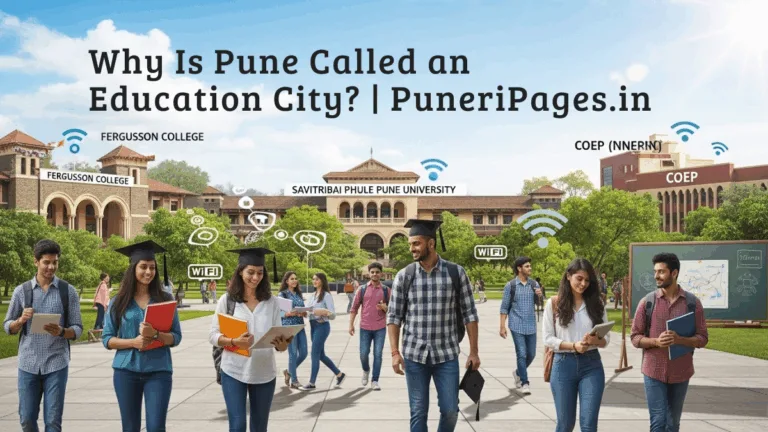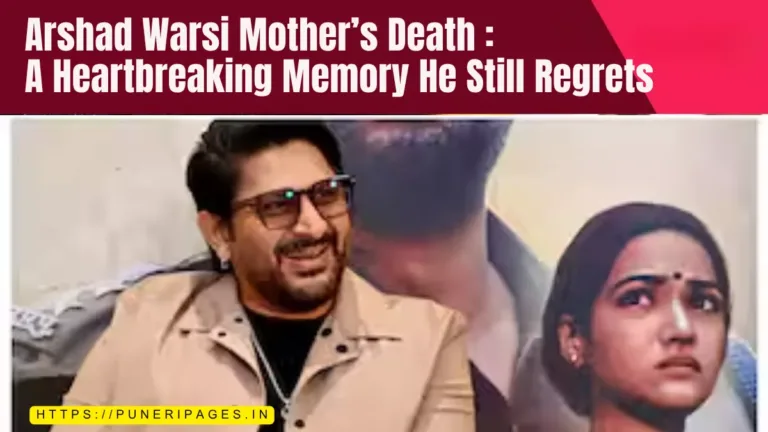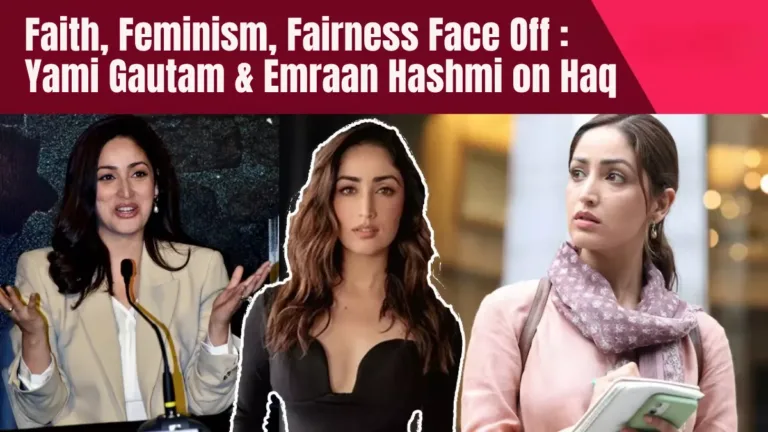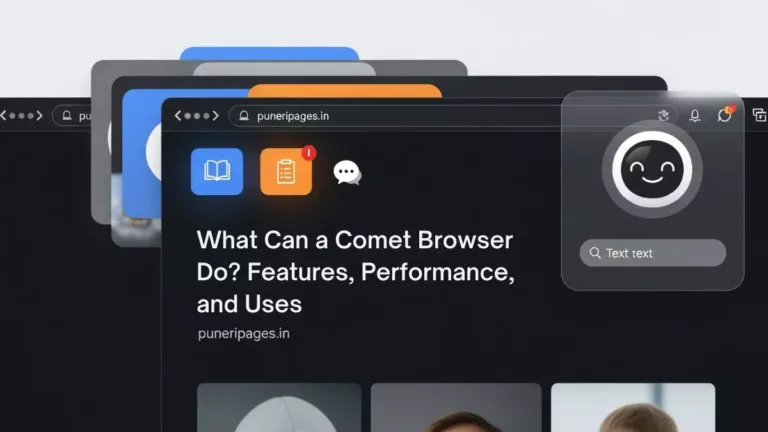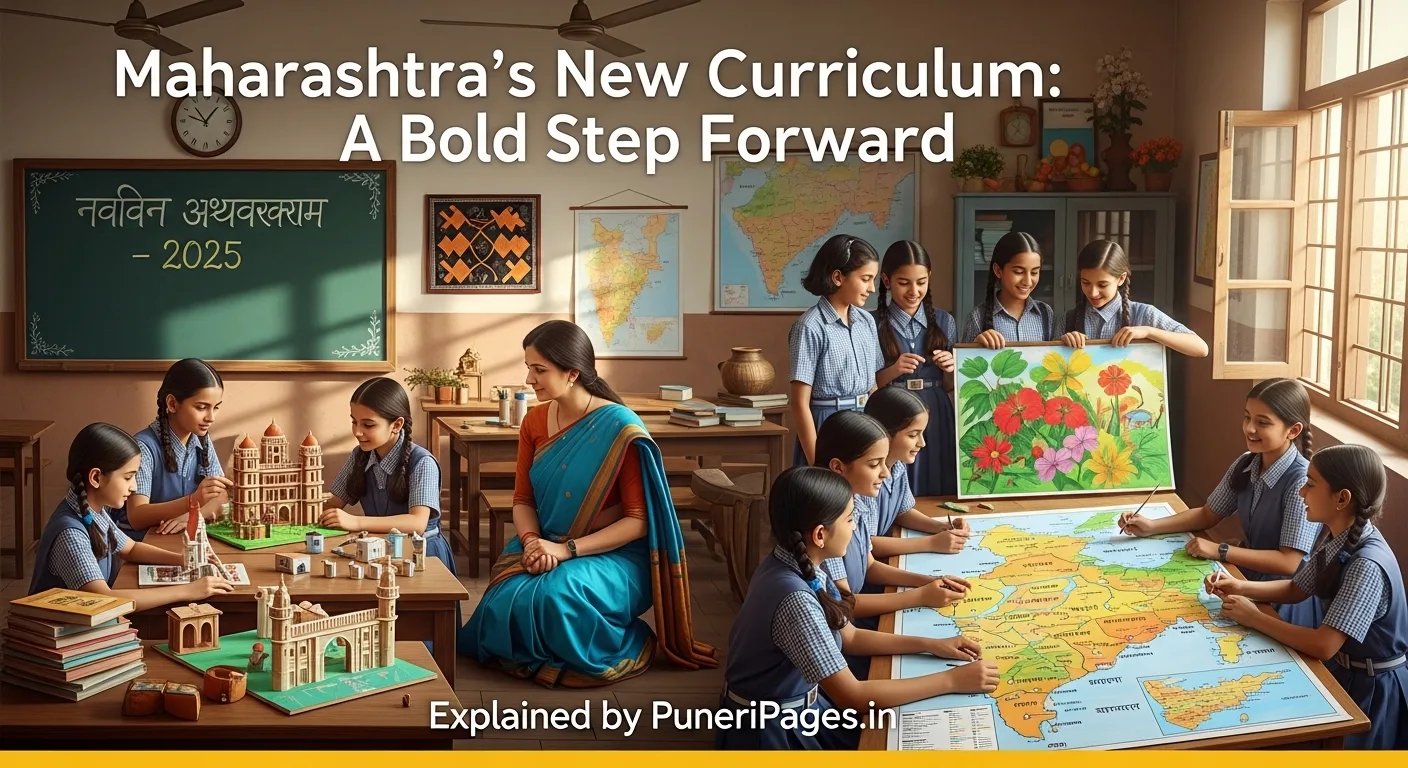
Maharashtra’s new curriculum draft promotes hands-on learning, teacher flexibility, and local cultural context — captured here in a vibrant classroom scene.
By Prashant for PuneriPages.in
Let’s be real — when you hear “curriculum reform,” you probably imagine a bunch of officials sitting in an air-conditioned conference room deciding what kids should study without really knowing what it’s like in an actual classroom. But Maharashtra’s new school curriculum draft? It’s worth pausing for. Whether you’re a parent, student, or teacher, this new draft could change the game.
Table of Contents
So, what’s this new curriculum all about?
Maharashtra’s education department has unveiled a fresh draft for the state school curriculum, which will be in place until 2035. It’s designed to align with the National Education Policy (NEP) 2020, but more than that, it’s trying to tackle some age-old issues — outdated teaching methods, rigid subject divisions, and boring textbook-heavy learning.
Instead, the draft talks about making learning more real, more local, and honestly, more fun. Think practical knowledge, activities that make sense, and yes — finally giving regional issues and local culture some real space in the syllabus.
What’s actually changing in the classroom?
Here’s what caught my eye:
- No more stuffing textbooks: Teachers won’t be pressured to finish every last chapter in the book. The idea is to focus on actual learning instead of syllabus completion.
- Teacher-designed content: Schools and teachers will have more say in what and how they teach, with room to bring in local examples and practical applications.
- Multi-disciplinary mix: Subjects will start overlapping more. A history lesson might connect to environmental science or economics — just like real life.
- Cultural context matters: Marathi culture, local heroes, community stories — all of this gets more weight.
For students, this means a break from rote learning. For teachers, it’s a green light to be more creative and relevant.
How is it different from the old system?
The older system was rigid. One textbook, one answer, and God forbid you step out of the syllabus. Now, this draft proposes giving schools more freedom to design their curriculum within the broad framework set by the state.
It encourages critical thinking, creativity, and practical understanding. And let’s be honest — that’s what we need right now, not just for better marks, but for better humans.
Sounds good — but what are the challenges?
Okay, let’s not sugarcoat it. Implementation is going to be a beast. Teachers will need training. Schools in rural areas may not have the resources. And some schools might still stick to the old ways because change is hard.
Also, letting schools and teachers decide parts of the curriculum means the quality of education might vary from place to place. So how do we keep things fair?
What can we — students, parents, educators — do?
For starters, speak up. The draft is open for public feedback until August 15. If you care about how kids learn in Maharashtra, now is your chance to say something. Let’s not wait until the final version drops and then complain about what’s missing.
And if you’re a teacher, start thinking of ways you can bring more life into your lessons. If you’re a student, get ready to be asked more “Why?” instead of “What?” If you’re a parent, ask your school what they’re doing to prepare.
Final thoughts
This isn’t just another policy PDF we ignore. It’s a chance to rebuild how we teach and learn in this state. The draft isn’t perfect, but it’s bold, and it’s trying to go beyond the usual “chalk and talk” model.
If we do this right — with enough support, training, and feedback — the classrooms of 2035 could look very different from today. And maybe, just maybe, students will start looking forward to what they learn.
– Written by someone who still remembers cramming definitions the night before an exam, and wishes we’d made this shift years ago.
